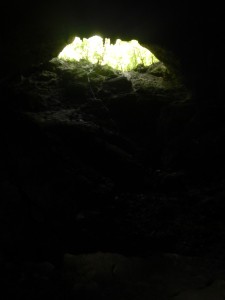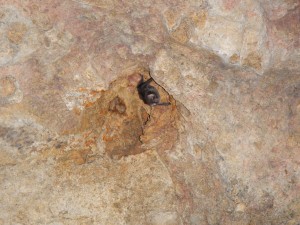I never truly appreciated the feeling of being clean until today. There’s one thing about coming back hot and sweaty after a hike, but it’s quite a different feeling returning from an afternoon of spelunking covered in a fine mixture of mud and bat guano.


But let’s backtrack. Today’s tasks began relatively lightly by wrapping up our (inconclusive) cecropia experiments. The day’s primary activity was the exploration of the cave from which Las Cuevas gets its name (and water). The 9-chambered cave is the center of an ancient Mayan ceremonial site, with each of the rooms representing one of the nine layers of the Mayan underworld. The cave holds numerous Mayan structures and pottery, and even what appeared to be a human femur. I doubt I’ll be picking up spelunking for recreation anytime soon, but our exploration gave me a newfound appreciation for cave biology. We found two species of bats within the cave system, as we crawled on hands and knees through narrow passageways that opened into large caverns. I thought I was clean until the cave’s final test: a tiny chamber with low oxygen content, housing a peccary skeleton. Let’s just say I was in great need of a hot bath after that adventure.
Finally, we set up an experiment to test nitrogen deficiency in arthropods of the rainforest canopy. Once again, we utilized extremely sophisticated technologies to create pitfall traps for arthropods in the canopy and forest floor, taking advantage of our most accessible nitrogen source: urine. I was thankfully spared from urine collection, but the afternoon was dedicated to setting up pitfall traps along the Maya trail (not named after yours truly). Though there were no sightings today, the leaf-litter our traps were set in are a prime habitat for venomous snakes; the forest floor was thoroughly checked for species like the yellow-jawed tommygoff (Bothrops asper) before setting traps. I did however spot several anole species along the Maya trail, all of which moved too quickly to be identified.
All in all, day 5 of EBIO 319 is best summed up by the following statement by Dr. Scott Solomon, “We’re exploring the mammalian excretory system!”
